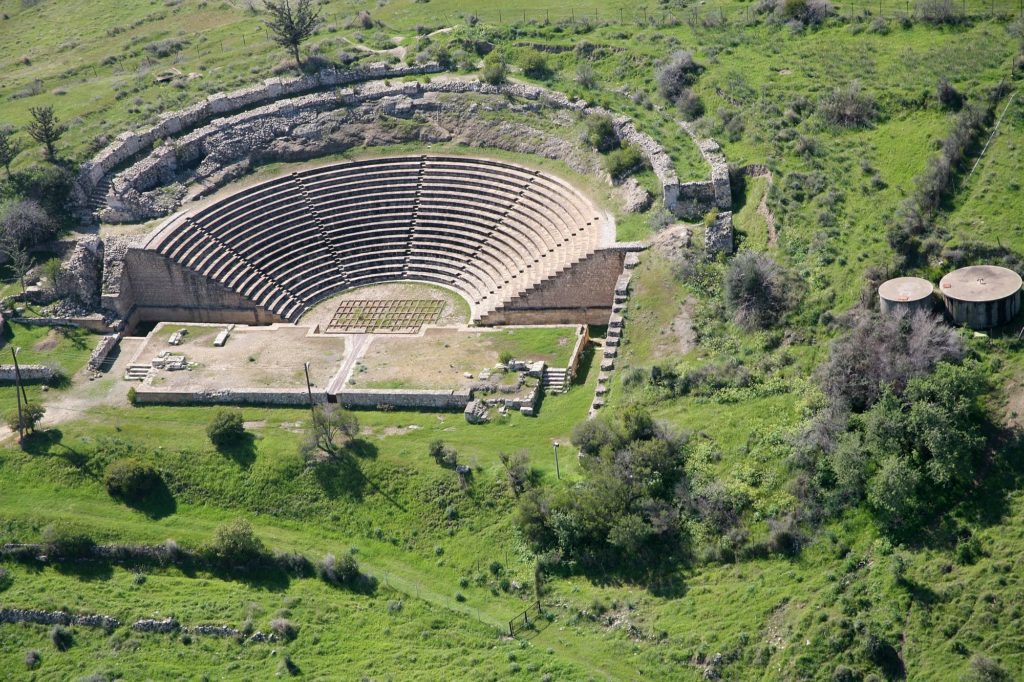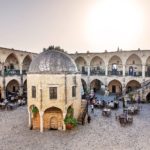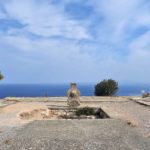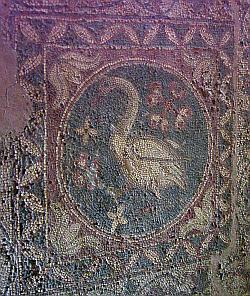 When visiting or indeed living in Northern Cyprus, there is so much to see in the way of historical sites, and there are some sites which are an absolute must see. In this article we will detail the delights of Soli, a fascinating site in terms of world history.
When visiting or indeed living in Northern Cyprus, there is so much to see in the way of historical sites, and there are some sites which are an absolute must see. In this article we will detail the delights of Soli, a fascinating site in terms of world history.
Soli is located to the far west of North Cyprus beyond Güzelyurt, it’s just past the village of Gemikonağı along the coastal road. There is a sign for Soli just after Gemikonağı that indicates that you should turn left, but for some reason the sign’s not particularly big so look out for it carefully as people have been known to completely miss it! From the turning follow the road up and you will come to the site located on the lowland slopes where there is ample parking and a ticket office, (cost of a ticket at time of writing is 10tl), where you will be given literature about the site.
On first glance Soli doesn’t look very big at all, all you see is just a covered area to protect the various ruins and mosaics 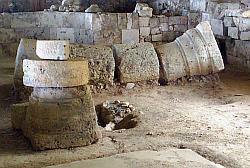 (amazingly this was only done a few years ago!), but as you explore you will find the amazing amphitheatre as well as realising that this site has not been excavated to anywhere near its true size.
(amazingly this was only done a few years ago!), but as you explore you will find the amazing amphitheatre as well as realising that this site has not been excavated to anywhere near its true size.
First records of Soli’s history date back to around 6000BC, when it was called Si-il-lu, one of a list of cities that paid dues to the Assurian kings. One common theory about its current name appears to have come from the myth that Aepean King Philokypros moved his capital city here after a recommendation from Athenian philosopher Solon, and subsequently it was named Soli after him. Who knows if this is indeed true, but it’s a nice theory anyway.
Despite the best efforts of the Ionian Revolution, which included the people of Soli, Persians took hold of the city around 498BC. During their time the city became an important centre of the Orthodox faith during the birth of 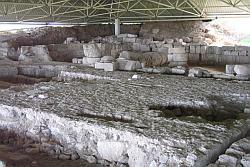 Christianity. Soli had always been a very prosperous city due to its copper mining activities (sadly still all too evident to this day) and this continued well into the 4th century until the harbour either finally silted up or was deliberately filled in to prevent the entry of invading ships.
Christianity. Soli had always been a very prosperous city due to its copper mining activities (sadly still all too evident to this day) and this continued well into the 4th century until the harbour either finally silted up or was deliberately filled in to prevent the entry of invading ships.
The future of Soli was finally decided after the Arab invasions during the 7th century when it was sadly ransacked and destroyed. This together with its economic decline meant that it was never rebuilt or used as a city again.
Today you can see just some of what remains, with much of the city still covered by earth which is ultimately protecting it from the elements for years to come. A lot of the photos you may see of the remaining mosaics will possibly mislead you as the mosaics do now appear quite faint; having been open to the elements for years they have faded somewhat. However, the pictures and indeed the mosaics themselves do give one an idea of 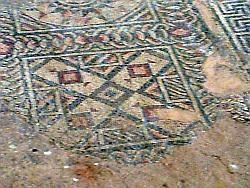 the grandeur and detail that went into the building of this amazing city.
the grandeur and detail that went into the building of this amazing city.
The main site of Soli consists of a basilica which was built around the 4th century, it holds the vast majority of interest because of its beautiful mosaics which feature birds, fish and geometric patterns. The layout of rooms, corridors and other parts of structures such as columns, seats, and inscribed tablets are also still visible. Remains of a later 12th century church built within the basilica can also be seen.
There is plenty of signage to guide you around each section of the site, indicating various pieces of interest to take a look at.
Walk further up from the basilica and you will come to the amazing Roman amphitheatre which dates back to the 2nd century. It has the most amazing views out to sea – and is set in the perfect location for an amphitheatre.
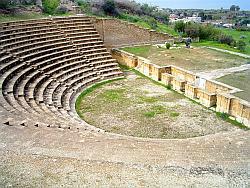 Walking to the top, only then will you realise its size, apparently having been able to seat around 4,000 spectators. Sitting atop this site you can see both to east and west for miles and it’s a serene place to be and take in the surroundings and imagine Soli’s place in history. Sadly much of the original stone from the site was taken by the British to be used for the building of Port Said and the Suez Canal, which is quite hard to swallow, being British!
Walking to the top, only then will you realise its size, apparently having been able to seat around 4,000 spectators. Sitting atop this site you can see both to east and west for miles and it’s a serene place to be and take in the surroundings and imagine Soli’s place in history. Sadly much of the original stone from the site was taken by the British to be used for the building of Port Said and the Suez Canal, which is quite hard to swallow, being British!
Other areas of interest around Soli include the Agora, which would have been the area for market trading, as well as the remains of three temples, Isis, Aphrodite and Serapis, although there is not much to see now. You can still see a statue of Aphrodite from this site housed in the Cyprus Museum in the south of the island. Further up above the amphitheatre there are also remains of other Hellenistic and Roman necropolises.
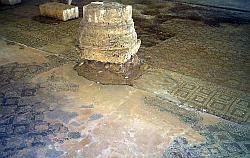 That concludes our article on Soli, a wonderful example of history and architecture still in good enough condition to be amazed by in our opinion. If you are visiting Soli then you should also make time to visit the nearby site of Vouni, whose sole purpose was to spy on Soli making them unavoidably intertwined.
That concludes our article on Soli, a wonderful example of history and architecture still in good enough condition to be amazed by in our opinion. If you are visiting Soli then you should also make time to visit the nearby site of Vouni, whose sole purpose was to spy on Soli making them unavoidably intertwined.
Soli is open to the public from 09.00-18.45 in summer time and 09.00-16.45 in winter.

